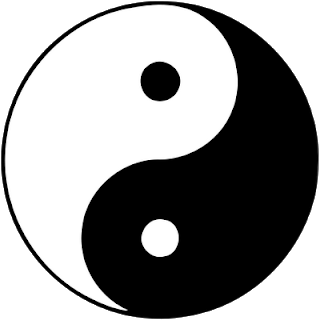So it’s about 4pm on a weeknight and I just finished cooking part of tonight’s dinner. And, that’s late for me. I’m usually done earlier than 4pm, depending on how much I am cooking.
I know, it’s weird.
And I am finally OK with that.
We don’t eat supper that early. Usually we eat anytime between 5-6:30pm. For me, the earlier the better, but my husband does have a regular full-time job and well, he works until 5pm, at least. So it is pretty common for me to pre-cook dinner and then just nuke it when we are ready to sit down and eat. Because the reality is, if it doesn’t get cooked early, there may be no supper. Except maybe cereal. Or take-out. And well, a healthy eating plan doesn’t involve much of either of those. I don’t know what people with chronic illnesses did before the invention of the microwave!
This is just one of the many accommodations I have had to figure out and accept since I realized that my energy levels are going to be unpredictable…like, for the rest of my life. Pre-Sjögren’s, I would have the typical mid-afternoon energy slump like everyone else, and then would bounce right back. But autoimmune disease redefines the meaning of the word fatigue. We are talking mind-numbing, body stopping, I can’t take another step or blink my eye kind of exhaustion. There is oftentimes no warning and when it hits, look out. For some of us, it’s a constant, pervasive kind of tiredness.
In the past, I would ignore the warning signals my body was attempting to give me. I was too busy trying to function as a person without an illness, in a busy world where chronic illness is usually not accepted or understood. In a world where the motto is “go, go, go”, no matter what the price to our bodies may be. Just keep caffeinating. Just keep doing. And then I would get frustrated that my body couldn’t keep up.
As the years go by, the fatigue issues has become more of an issue for me during the day. I started to notice that in the mornings, when many people with autoimmune illness are at their worst, I would be at my best. Maybe not always pain-wise, but definitely energy wise. I noticed a trend when I started working that there is a very specific time in the afternoon when I start to go downhill. When I sub (as a school nurse) at the high school, I have the most energy. Those hours are from 7:25am to 2pm. The elementary school is the most difficult for me and those hours are 8:30am to 3:15pm. I notice that I can predict a significant increase in my fatigue beginning around 2pm.
That is the first shift in energy levels. The second starts sometime after 5pm. It’s all downhill from there and by 6pm, I render myself pretty useless. I am typically in my pajamas by suppertime. Nighttime activities have become harder and harder. I recently dropped out of a twelve week choir class because the 7-9pm weekly class was killing me. Evening church activities, conference calls, and meetings, for various things, have become something that I have had to rethink in terms of priorities. Up until very recently, I continued to do these things, despite the obvious detriment to my overall health.
There are some occasions where I can push past the fatigue to get myself to an evening event and even enjoy myself. I have come to realize that this is usually during an event I am really excited about such as a friend’s party, concert I’ve really wanting to see, etc. After a little research on that, I found out that the chemical hormones that are released when someone is excited about doing something actually have a positive influence on a person’s physical well being. Honestly, I think that is the only reason I can get myself to an 8pm concert! However the ramifications of those evening events are high, sometimes too high.
I have recently decided that for now, I am going to start scheduling my appointments, friend dates, etc.around what my body is telling me, as often as possible Nowadays, I wake up and am ready to roll between 6:30-7am and by 2-3pm, I’m done. Instead of pushing past those limits every single day, I’ve started to respect them. The problem is, the rest of the world doesn’t always respect them or understand. Let’s face it, in this country anyways, most social functions take place after 5pm and on weekends.
My husband and I go to a lot of concerts together and honestly, sometimes it is incredibly difficult. It will say that the concert start time is 7 or 8pm when in reality, the main act doesn’t get rolling until 9pm. We recently went to an afternoon concert that started at 2pm and it was truly one of the best times I have had with him and some other friends of ours. I was alert and able to concentrate. I wasn’t so focused on how exhausted I was and my pain levels was manageable. I had a lot of fun. Same thing for a recent afternoon Red Sox game, which started in the afternoon instead of the evening. A few hours difference can make or break a day for me and just as importantly, make or break the rest of the week.The running joke between my husband and I is that whenever there is an evening social event, no matter what time it starts, we have to be out of the house by 4pm so I can keep some momentum going!
Another example is from this morning. I had a close friend over for a visit. She’s an early riser as well and we were eating breakfast together and chatting at my house at 9am. I can actually remember everything she said to me because that mind numbing fatigue hadn’t set in yet.
I know there are going to be exceptions and I will occasionally have to make concessions. And,I don’t expect the world to completely function according to my illness needs. But that being said, I have recently realized that I also have the choice to say no. Last week, I think I used the word “no” more often than in the previous six months combined. But, that’s a topic for another post! The point is, I get to choose what is best for me. If it sometimes, or often, means missing out on things I would normally want to attend, then so be it. The right people will understand.
I recently said something to my husband about this. It was a Saturday night and we were home together watching TV. It was about 7pm and I couldn’t hold my head up any longer. So I asked him if he would go to bed early with me. I’m not usually sleeping at 7pm, but I am resting in bed. I felt bad because it was a Saturday night and that had been happening a lot lately. And I told him that…that I felt bad he doesn’t stay up late like he used to before we started dating, because he wants to spend time with me. His response was profound and basically he said that altering his lifestyle/routine to accommodate me was better than not being with me. Again, the right people will understand.
Since I’ve started listening to my body more and making adjustments, I have noticed that I am much more productive during that 6:30am-2pm time frame. Because I am rested. It’s not a lot of time to work with and once school starts in September, it will be even much less so. But, the house has been cleaner, I’m getting more errands done, and I am spending more time at the gym. I am more tuned in to people and I am remembering more of my conversations with other people.
Is this the way I would have chosen to live my life? No. I’d rather not have Sjögren’s at all. I’d rather live a life like I used to: sleeping eight hours a day and then being able to function throughout the remaining sixteen hours, without exception. But rather than being a victim, I’m working on figuring out what DOES work for me. You can do a lot of living in just seven hours a day. And honestly, many days, it’s even less than that. My days may not have a lot of quantity, but they most certainly have a lot of quality.





